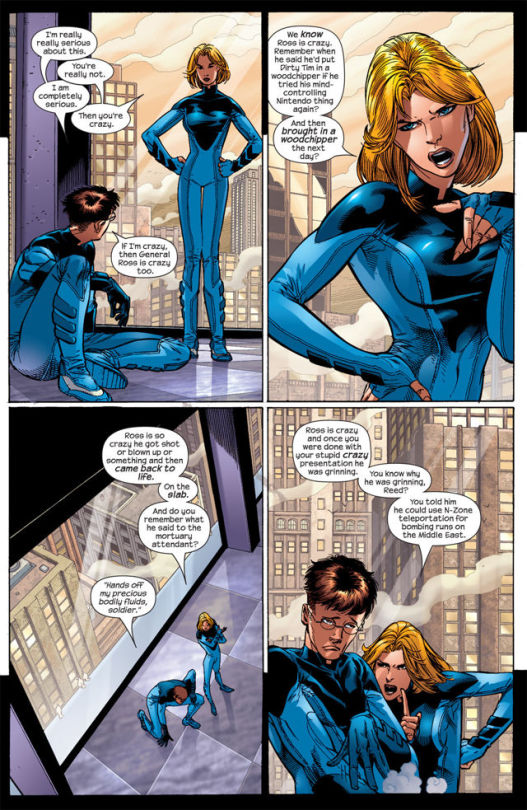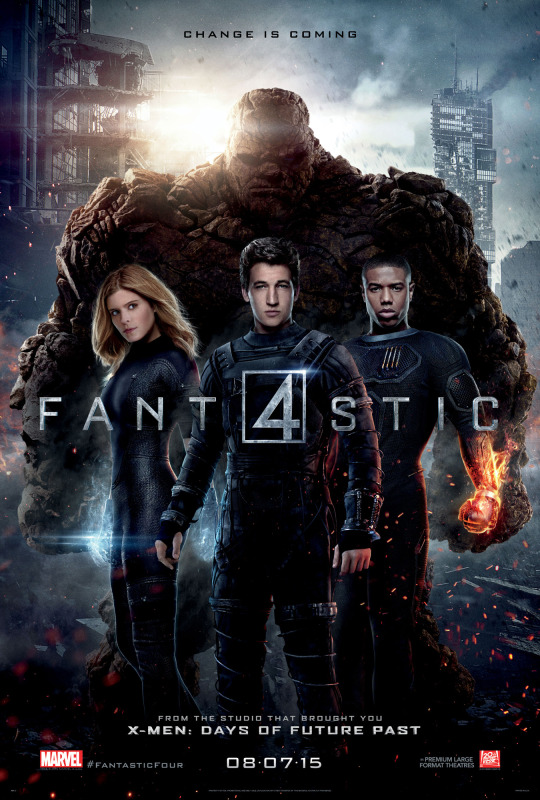My good friend and cohost of Sequential Statement sequentialstatement, Nick
Dutro, has put together a piece about the newly debuting Fantastic Four movie
that comes out today. I’m happy to have him on the site; as always, if you have
an interest in writing a guest post for Sequential State, please contact me at
sequentialstate at gmail dot com.
P.S. (you should subscribe to our podcast on iTunes or Sticher!)
—-
Fantastic Four, the latest movie adaptation of Marvel’s
first family, comes out today. This is the fourth time the Fantastic Four has
been filmed for the big screen, and the team’s third cast. This iteration stars
Miles Teller, Michael B. Jordan, Kate Mara, and Jamie Bell, and is directed by
Chronicle’s Josh Trank. But this story
differs from the last time we saw the Fantastic Four in theaters (then helmed
by director Tim Story): This time around the Fantastic Four are teenagers, and
the plot of the movie is based on Marvel’s Ultimate Fantastic Four.
When Marvel created the Ultimate Universe in 2000 as an
attempt to entice new readers after the success of X-Men and Spider-Man at the
theaters, the emphasis was on retelling classic stories in a way that would
keep what made them great without the burden of 50 years of ongoing continuity.
As such, most of the characters that were well into their 20s or 30s in the
comic books would go back to being teenagers as they were when Stan Lee, Jack
Kirby, and Steve Ditko first envisioned them. And it proved to be a success at
first with Ultimate Spider-Man and Ultimate X-Men.

In 2004, Marvel introduced the Fantastic Four to the mix and
tasked Brian Michael Bendis and Mark Millar with co-writing the new Fantastic
Four. Adam Kubert, who previously worked with Millar on the Ultimate X-Men
book, was handling art duties. Millar’s artist on The Ultimates, Bryan Hitch,
was even brought on board to give his treatment for the team’s costumes, which
didn’t even include the iconic “4” logo in their first few adventures.
The first six issues essentially retold the origin of the
Fantastic Four and their first encounter with The Mole Man from Fantastic Four
#1, albeit with a new setting and origin story. Reed Richards, Susan Storm,
Johnny Storm, and Victor Von Damme (an updated name for the future nemesis, Doctor
Doom) became teens in a government think tank. This core group is aided by Ben
Grimm in their travels through a different dimension which changes the team into
something superhuman.
After that initial story, the Ultimates comic took the group
through familiar beats, using some of the hottest talent in comics. Writer
Warren Ellis, who at the time was in the middle of his masterful Planetary at
Wildstorm, wrote two arcs for the book with art by Stuart Immonen and Andy
Kubert, respectively, followed by another stint by Mark Millar and Greg Land.

But by issue #33, Ultimate Fantastic Four had gone from
being the next best thing to just another series produced by the House of
Ideas. Mike Carey, whose work included critical darlings like Hellblazer and
Lucifer, had taken over the book from Millar, but the writing was already on
the wall that the Ultimates line was falling apart. Ultimate Fantastic Four
would continue for another 27 issues, with artists Pasqual Ferry, Scott Kolins,
and Mark Brooks each putting their own spin on the characters, until the final
few issues where art duties were sent to Wildstorm, with Tyler Kirkham handling
pencils.
Despite a few of other successes, including The Ultimates 2,
and the introduction of Miles Morales, the Ultimates line’s most celebrated
original character, the Ultimates imprint had mostly seen its best times when
the Fantastic Four made their debut. Most of the stories in the Ultimates universe
were just retreads of their regular continuity tales, with little in way of
true original storytelling. As for Ultimate Fantastic Four, the series would
last 60 issues, making it the longest running Fantastic Four comic since its
initial run. The comic met its end with Ultimate X-Men as the line was given
its first major shake-up, “Ultimatum.” The final issues were a tie-in to that
event, with Kirkham completing his 10 issue run on the book with a script by
Joe Pokaski.
The first 102 issues by Stan Lee and Jack Kirby show the
Fantastic Four as a product of its time, a comic that explored the far reaches
of a universe we didn’t understand and a threat of the future the world was being
thrust into. As that story evolved through other creative teams, we saw changes
that rounded out the quartet. The birth of the Richards’ children, Franklin and
Valeria, gave Reed and Sue a purpose other than being the distant genius and
his neglected bride. Johnny Storm on many occasions teetered on the line
between abrasive hothead and struggling adult. And the ever-lovin’, blue-eyed Thing
grew to be so much more than a man trapped in the body of a monster. Reversing
the continuity in the Ultimates universe and making those characters teenagers
again meant losing the Fantastic Family. And the charisma and cohesiveness of
the Fantastic Four is just not as strong without the familial ties that bind it
together.

As to why the Ultimates series never made an impact, or even
lived up to the (at least initial) success of the rest of the Ultimates line,
there are a couple of possibilities. Ultimate Fantastic Four, much like the
rest of the comics in that line, did little more than retell familiar stories
with characters that readers had grown tired of. Or perhaps it is that the Fantastic Four have
not been relevant since their height in the 1960s and 70s. Even despite great
runs on the title by John Byrne, Mark Waid, and most recently Jonathan Hickman,
the Fantastic Four have not been a great seller for Marvel.
Even when given the best shot at success the thing that makes
the Fantastic Four work as a super hero comic is that it (at its core) is about
a family that has grown together. When Fantastic Four comes out today, it too
will face the same kind of problems as its Ultimates comic book predecessor
did. By using a comic that divorced the Fantastic Four from its familial roots
to construct a superhero movie, Fox has converted the Fantastic Four into a
generic big team superhero movie. And in
a world where the Avengers and Guardians of the Galaxy exist, what is the draw
for another big team superhero movie? Fox’s big-picture remake has assembled a
strong cast and a visionary director, but ultimately, the source material has
shown that no amount of talent can make up for property that is missing its
core bond.
